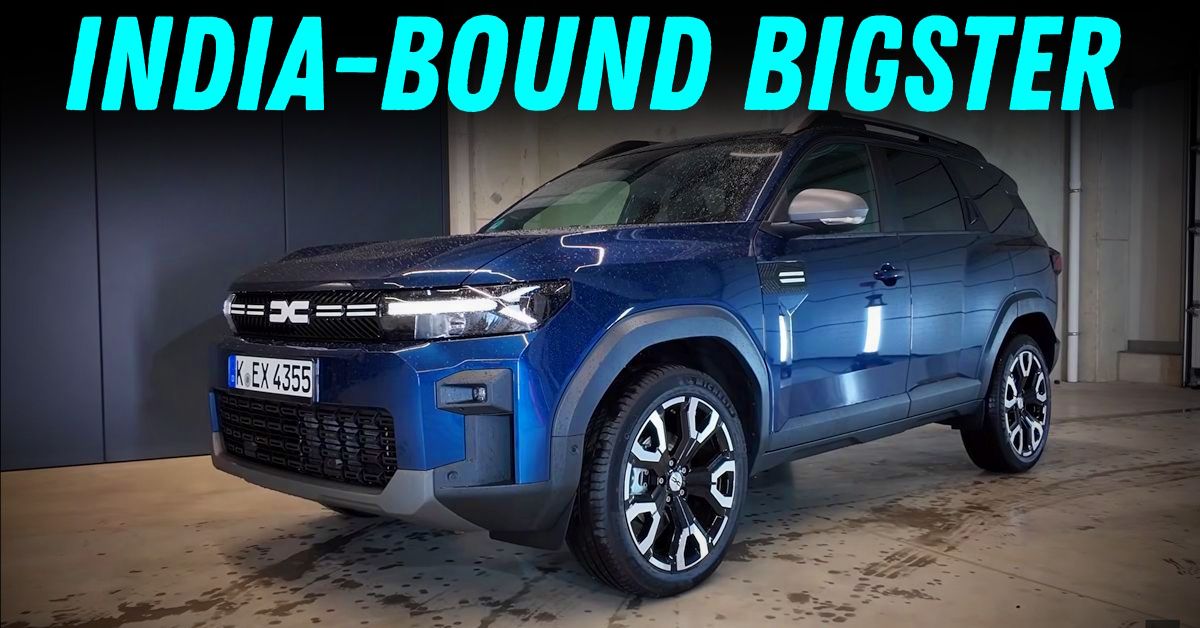Renault’s Big India Push For 5 % Marketshare: Duster Comeback, Five New Models


Renault is gearing up for a bold new innings in India. The French carmaker has mapped out a high-stakes comeback plan that hinges on a ₹5,300 crore investment, a fresh design philosophy, and a pipeline of new models—including the much-awaited return of the Duster and its larger sibling, the Bigster.
The target? A five-fold increase in market share—jumping from just 0.8% in FY2025 to 5% by 2030. That would mean pushing annual sales to nearly 5 lakh units from just 38,000 in FY2025.
At the heart of Renault’s strategy is its new Chennai Design Centre—the company’s largest design studio outside France. This marks a decisive break from its earlier approach of adapting global models for India. Instead, upcoming Renault cars will be designed from scratch in Chennai, ensuring they better align with Indian preferences, especially in the fast-growing SUV segment.
Renault’s India CEO, Venkatram Mamillapalle, puts it simply: “From the first sketch to the final styling, everything happens here now.”
This locally-driven strategy aims to correct past missteps. While models like the Kiger found some traction, they were often seen as too soft for Indian roads. High ground clearance, rugged styling, and a commanding road presence—essential SUV traits in India—will now take centre stage in Renault’s new design language.
Renault has confirmed a product blitz to regain relevance in the Indian market. The brand will launch five models by 2027, including:
• A Kiger EV
• A facelifted Triber MPV
• A revised Kiger SUV
• Two all-new SUVs—one in the B+ segment, another in the C segment, which includes the upcoming Bigster, a larger sibling to the Duster
The return of the Renault Duster is arguably the most anticipated. Once a runaway success in India, the Duster had been discontinued due to ageing underpinnings. The new-generation model is expected to be bigger, better equipped, and more rugged—aimed squarely at rivals like the Hyundai Creta and Kia Seltos.
The Bigster, expected to follow soon after, will be Renault’s first foray into the premium midsize SUV segment. If priced right, it could give the brand a foothold in the ₹15–20 lakh bracket—something it’s never seriously attempted before.
Renault also has its eyes on the electric space, and its first move will be the Kiger EV, likely to debut in late 2026. With a target price below ₹10 lakh, Renault hopes to attract first-time EV buyers, a segment that accounted for nearly 45% of India’s EV growth in 2024.
Renault is planning 55–60% localisation from day one, which should help keep costs in check. While the Kiger EV will compete with the likes of Tata’s Punch EV and the Citroen eC3, Renault is betting on a value-for-money proposition and early-mover advantage to carve out its space.
To support this product onslaught, Renault will leverage its Chennai manufacturing facility, which it now fully owns following a restructuring of its alliance with Nissan. The plant has an annual capacity of 4.8 lakh units—currently running at just under 10% capacity.
Achieving its market share goals will mean pushing this factory to near full utilisation—a sharp contrast from recent years where production scaled down amid falling demand.
Until now, most of Renault’s India portfolio has been priced in the ₹6–9 lakh range. But as the market shifts towards higher-value SUVs, especially in the ₹15–25 lakh range, Renault is looking to move up the value ladder.
The upcoming C-segment SUV, expected to be the Bigster, could be priced between ₹14–18 lakh and offer features and dimensions that appeal to more affluent urban buyers looking beyond the entry-level SUV space.
Renault’s roadmap to 2030 rests on three key pillars:
1. India-first design and development to deliver products better suited to local tastes and driving conditions
2. Segment expansion beyond value offerings into midsize and premium territory
3. Early-mover advantage in affordable EVs, with the Kwid EV as a spearhead
Renault isn’t treating India as a side bet. With plans to export India-made vehicles to other right-hand-drive markets, the company appears committed to long-term growth and scale.
As Renault’s India sales chief Francisco Hidalgo sums it up: “We’re not just staying in India. We’re here to win.”
Whether that intent translates into market share will depend heavily on how the Kwid EV, new Duster, and Bigster are received. The next 18 months should be exciting.